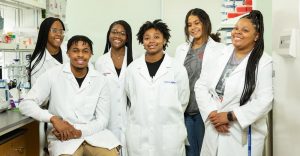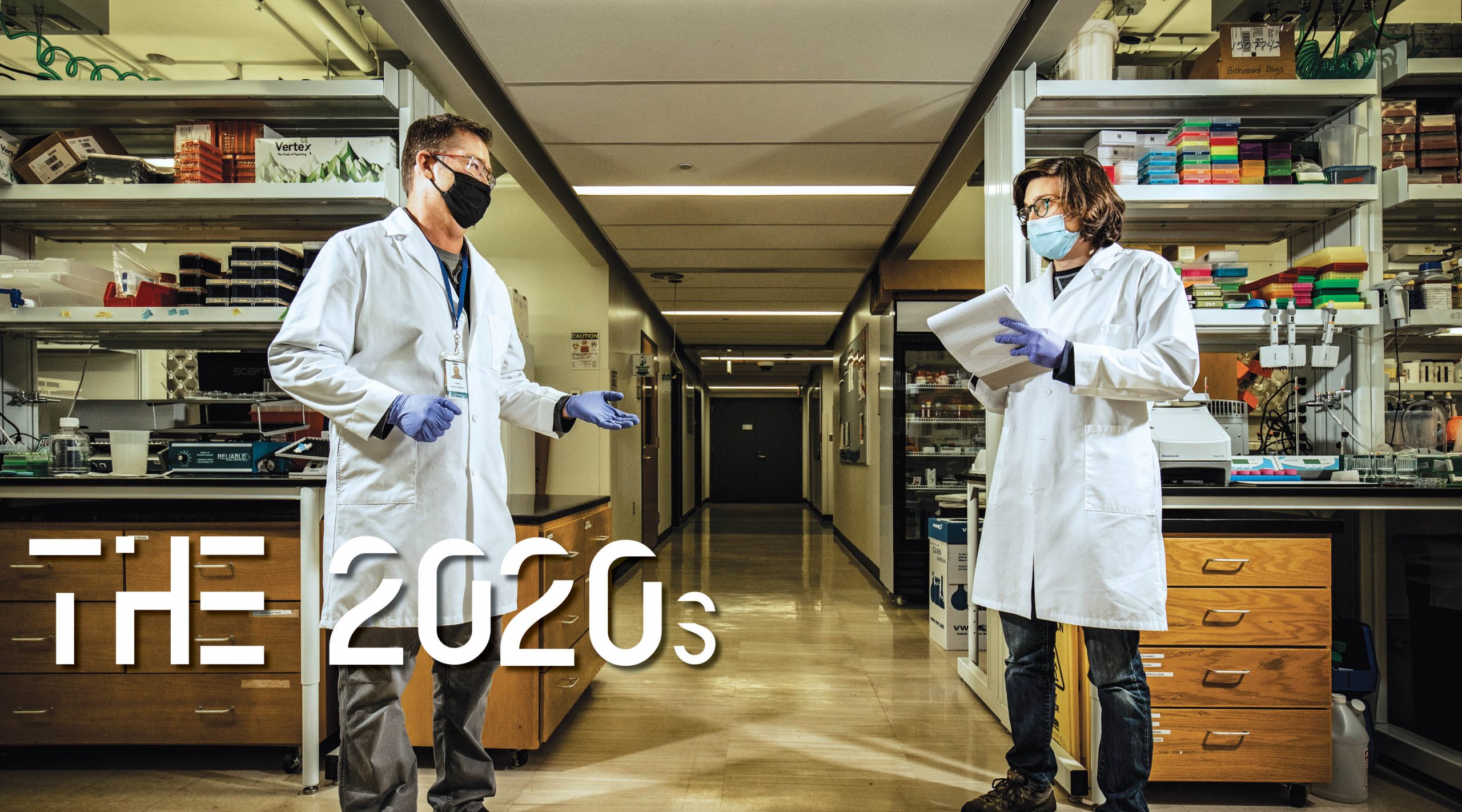Okay. We still have a ways to go in this decade. But even in spite of the pandemic, the 2020s are off to a strong start at OMRF.
Dr. Lijun Xia published groundbreaking new research in the journal Science and secured a new $13.1 million grant from the National Institutes of Health. Dr. Courtney Griffin also made waves with her work on vascular development in the eye that could give way to reversing vision loss in premature babies and adults living with diabetes.
In partnership with the University of Oklahoma Health Sciences Center and the Veterans Administration Medical Center, OMRF successfully renewed its Nathan Shock Center for Excellence in the Basic Biology of Aging grant with the National Institutes of Health. With this five-year award, Oklahoma is home to one of only eight Shock Centers in the nation, where researchers study the ways in which growing older leaves us prone to illness.

Similarly, we’ve renewed our Autoimmunity Center of Excellence designation from the NIH, joining a short list that includes the University of Pennsylvania, the University of Chicago and Weill Cornell Medical College. Between our two clinics, the Multiple Sclerosis Center of Excellence and the Rheumatology Research Center of Excellence, care providers are now conducting 6,000 visits each year with patients who live with MS, lupus, rheumatoid arthritis and other challenging autoimmune diseases.
In partnership with Langston University, Oklahoma’s only historically Black college or university, OMRF launched the Langston University Biomedical Research Scholars Program. The first of its kind in the state, the program aims to meld summer research internships with long-term mentoring to support students of color pursuing STEM degrees.
“In a typical internship, you might learn a few exciting things, but at the end of the summer, the research project for the student comes to an end,” said Dr. Byron Quinn, chair of Langston’s biology department. “Here, we’ve tried to build something more permanent – long-term relationships between LU students and OMRF mentors that will last years, not months.”
Whether education, research or clinical care, everything we do at OMRF is focused on the future. Will all of it work out? Of course not. But if our first 75 years are any indicator, quite a bit will. And that should make for exciting developments in the coming years – and good reading come our
100th birthday!
—
Read more from this issue of Findings
1940s: A Dream Becomes Reality
1950s: Opening the Doors
1960s: All Hands on Deck
1970s: Finding Firm Footing
1980s: A Time of Growth
1990s: Making A Mark
2000s: Eureka Moments
2010s: Research on the Rise
2020s: A Promising Future



